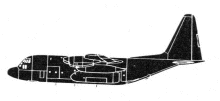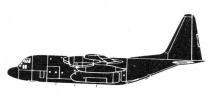Incident Overview

Description
RAF Hercules XV179 departed Baghdad at 16:24 for a routine flight to Balad. The airplane was flying at low level when it was hit by enemy fire. The outboard 23 feet of the right wing separated and the Hercules became uncontrollable. It crashed and broke up. PROBABLE CAUSE: “The Board concluded that XV179 crashed because the ac became uncontrollable after hostile action caused the explosive separation of the outboard 23 ft of the right-hand wing. Furthermore the Board conclude that the explosive separation could have been caused solely by [blanked out] or a combination of [blanked out] and another [blanked out] impacting the wing in the vicinity of the separation boundary.” CONTRIBUTORY FACTORS: “The Board concluded that the following factors contributed to the loss of XV179. a. Flying at low level and in daylight made the ac vulnerable to [blanked out]. b. The lack of any fire retarding technology, either foam or inert gas, in the fuel tanks allowed an explosive fuel/air mix to develop in the ullage. c. The ACHQ did not have sight of Op [blanked out] tasking and this reduced their ability to provide relevant intelligence support. d. The SAFIRE reporting, collating and dissemination chain was not efficient enough to provide aircrew with the time-sensitive intelligence they need. e. The lack of a procedure to pass up-to-the-minute and relevant threat information to the C-130 left crew unaware of the recent SAFIRE site between BIAP and BSE.”
Primary Cause
Explosive separation of the outboard right wing due to hostile action and a combination of factors impacting the wing’s ullage.Explosive separation of the outboard right wing due to hostile action and a combination of factors impacting the wing’s ullage.Share on:




